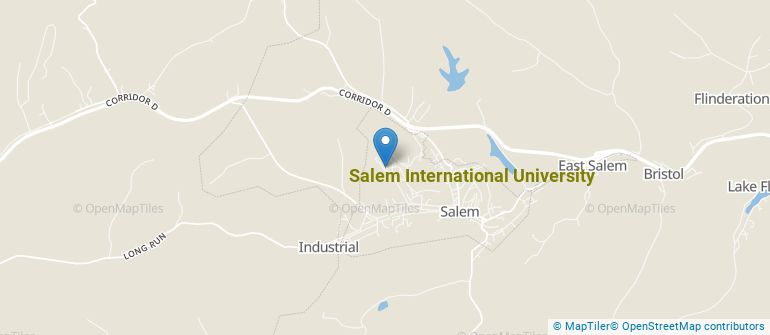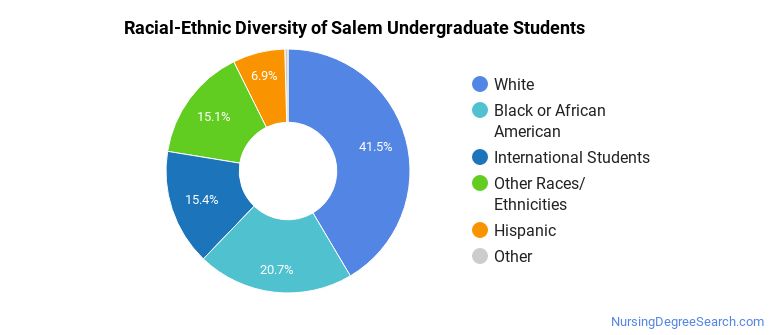Salem University Nursing Programs
Located in Salem, West Virginia, Salem University is a private for-profit institution. The rural area surrounding the school is great for students who prefer living in a country setting.
Where Is Salem University?

Contact details for Salem are given below.
| Contact Details | |
|---|---|
| Address: | 223 W Main St, Salem, WV 26426 |
| Phone: | 304-326-1109 |
| Website: | www.salemu.edu |
How Do I Get Into Salem?
You can apply to Salem online at: https://www.salemu.edu/apply-now/
Can I Afford Salem University?
The net price is calculated by adding tuition, room, board and other costs and subtracting financial aid.
Student Loan Debt
It's not uncommon for college students to take out loans to pay for school. In fact, almost 66% of students nationwide depend at least partially on loans. At Salem, approximately 92% of students took out student loans averaging $7,194 a year. That adds up to $28,776 over four years for those students.
Salem University Undergraduate Student Diversity

There are also 199 graduate students at the school.
Gender Diversity
Of the 709 full-time undergraduates at Salem, 45% are male and 55% are female.

Racial-Ethnic Diversity
The racial-ethnic breakdown of Salem University students is as follows.

| Race/Ethnicity | Number of Grads |
|---|---|
| Asian | 3 |
| Black or African American | 147 |
| Hispanic or Latino | 49 |
| White | 294 |
| International Students | 109 |
| Other Races/Ethnicities | 107 |
Geographic Diversity
West Virginia students aren't the only ones who study at Salem University. At this time, 28 states are represented by the student population at the school.
Salem University Nursing Concentrations
The table below shows the number of awards for each concentration.
| Major | Associate’s | Bachelor’s | Master’s | TOTAL |
|---|---|---|---|---|
| Registered Nursing | 12 | 6 | 2 | 20 |
| TOTAL | 12 | 6 | 2 | 20 |
References
*The racial-ethnic minorities count is calculated by taking the total number of students and subtracting white students, international students, and students whose race/ethnicity was unknown. This number is then divided by the total number of students at the school to obtain the racial-ethnic minorities percentage.
More about our data sources and methodologies.
